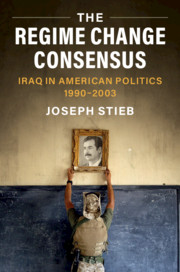“The Regime Change Consensus” by Ohio State University Mershon Fellow, Joseph Stieb, explains how the post-Cold War U.S. ideas and narratives about containment led to its invasion of #Iraq “a decision that ended in disaster both for Americans and Iraqis.” We discussed this topic, along with other projects he is working on.
In the 1990’s, after the first Gulf War, the concern was about nuclear weapons, not terrorism. Over the course of that decade, however, and up to the bombings on September 11th 2001, the consensus changed to interpret the Iraqi president, Saddam Hussein, as not only a nuclear threat but also someone who might arm terrorists. This turning point coincides with a book by Laurie Mylroie, Study of Revenge: Saddam Hussein’s Unfinished War Against America (2000), which was lauded by Paul Wolfowitz, one of the primary architects of the 2001 invasion of Iraq by the U.S. Dr. Stieb elucidated this evolution of Washington ideology on September 15, 2021 during our latest live stream. The ways in which these political discourses correspond with stereotypes in Hollywood, and the similarities and differences between liberal and conservative discourses were also topics we delved into, and in addition to how related Cold War history, containment, and other factors and ideological underpinnings the led to the second Iraq war. The academics who spoke out against the second invasion were sidelined and marginalized while figures like Mylroie and prominent anti-government Iraqi exiles were given the spotlight. The episode helped explain the the strange phenomenon of Saddam Hussein being linked causally with September 11th and alQaida, one that formed the diabolical rationale for the war and occupation of Iraq.
You can check out the recording on Facebook.com/mesc.osu, or on our Youtube Channel, or our Podcast, Keys to Understanding the Middle East.


